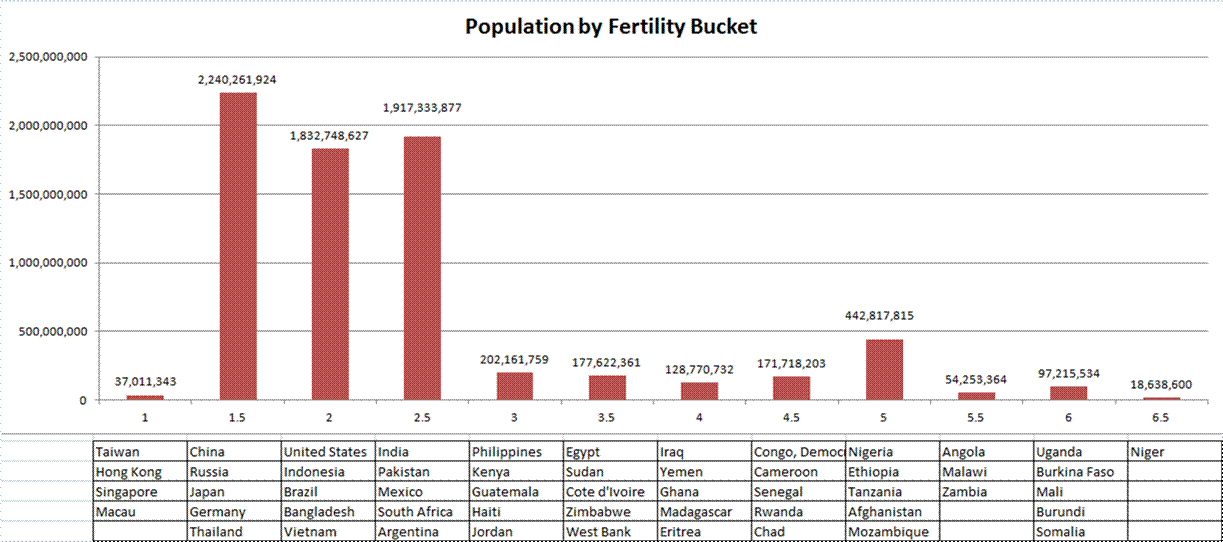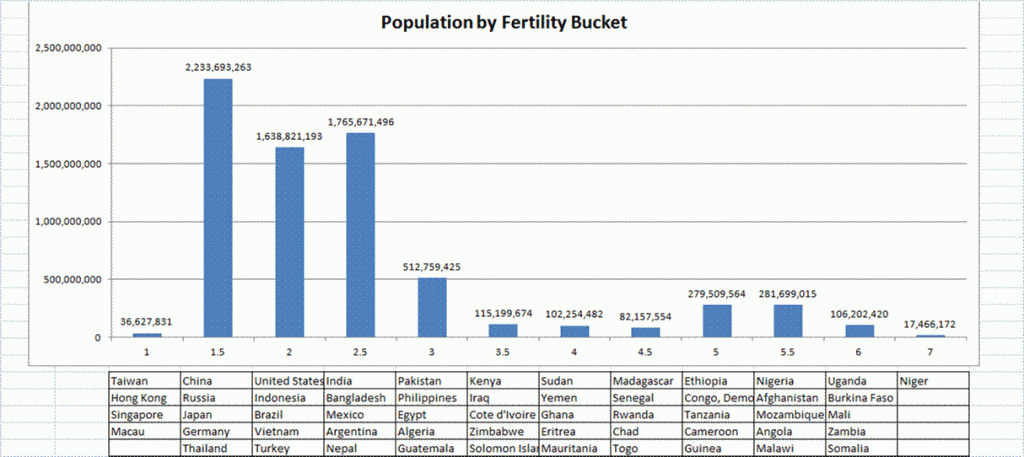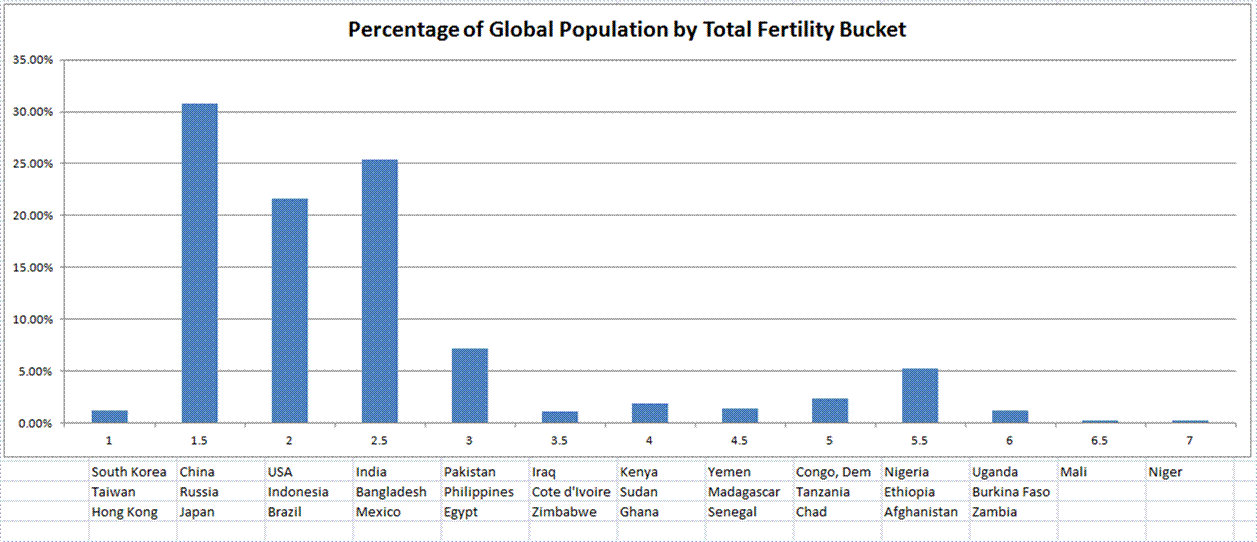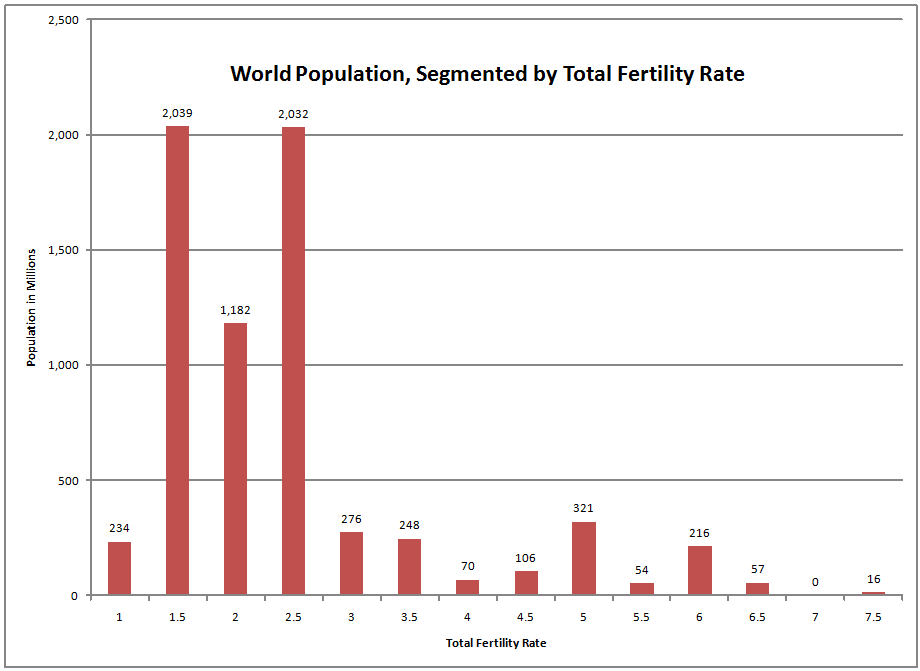On Human Fertility, Part 6
Data Credit: all data in this picture and article came from the CIA factbook. (2018 data)
I write about this once every two years or so. What got me to write this time is this article The Global Fertility Crash. The title is overly sensational, but the article is mostly anecdotal, as it interviews four relatively well-off women about their family sizes and the impact it has had on their lives. To me it wasn’t very informative, and seemed a little behind the curve.
Yes, fertility is falling globally. My guess is that it is falling slower than I have stated in the past, but still falling. Using the CIA Factbook for data, the 2018 total fertility rate for the world is 2.397 births per woman that survives childbearing. That is down from 2.407 in 2016, 2.425 in 2014, 2.467 in 2012, and 2.489 in 2010.? At this rate, the world will be at replacement rate (2.1), somewhere between 2030 and 2050.
This is a story of slow cultural change, mostly stemming from women wanting to be more like men. There are other factors, like reduction of war and disease, rising living standards. More children are living to adulthood, so some reason, why bother to have so many? Why not have one fewer?
I have only seen three answers to that: 1) you can’t trust government security programs if birth rates continue to fall. 2) some don’t trust an ethnic group near them and think it would be wiser to have more people in the future than fewer, and 3) religious faith. The optimism that stems from regular religious worship tends to lead husbands and wives to a few more kids.
But the “one fewer” logic is dominant now. When you see places like Saudi Arabia below replacement rate (2.06), US exceptionalism decreases to 1.87, India decline to 2.40 — something significant is happening.
Now it’s possible that the developed nations, staring at the problems that come from an elderly and shrinking population, may be changing their minds to some degree, and starting to have more children. Take a look at the graphs below:
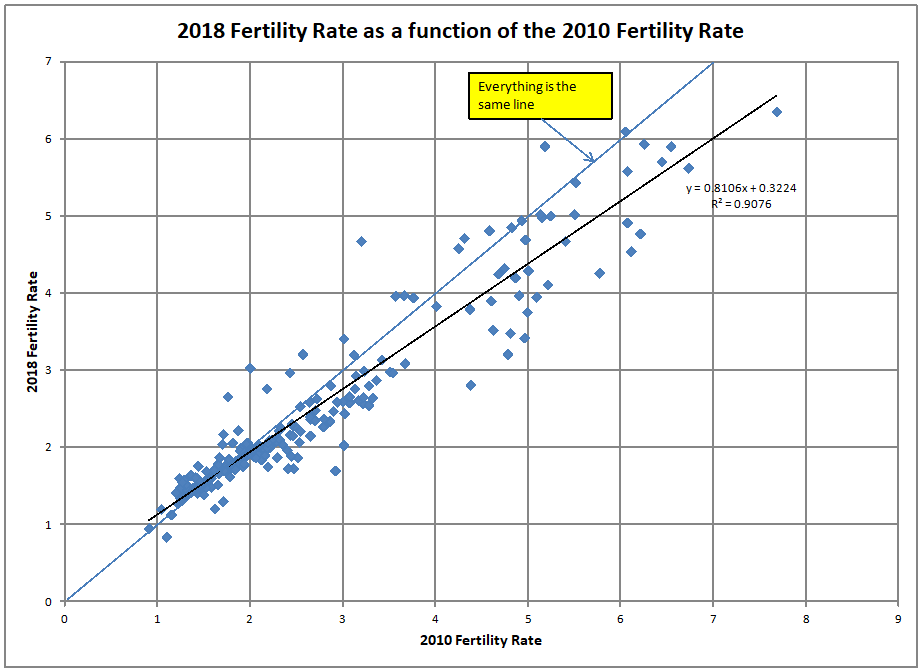
This next graph expands the southwest corner of the above graph.
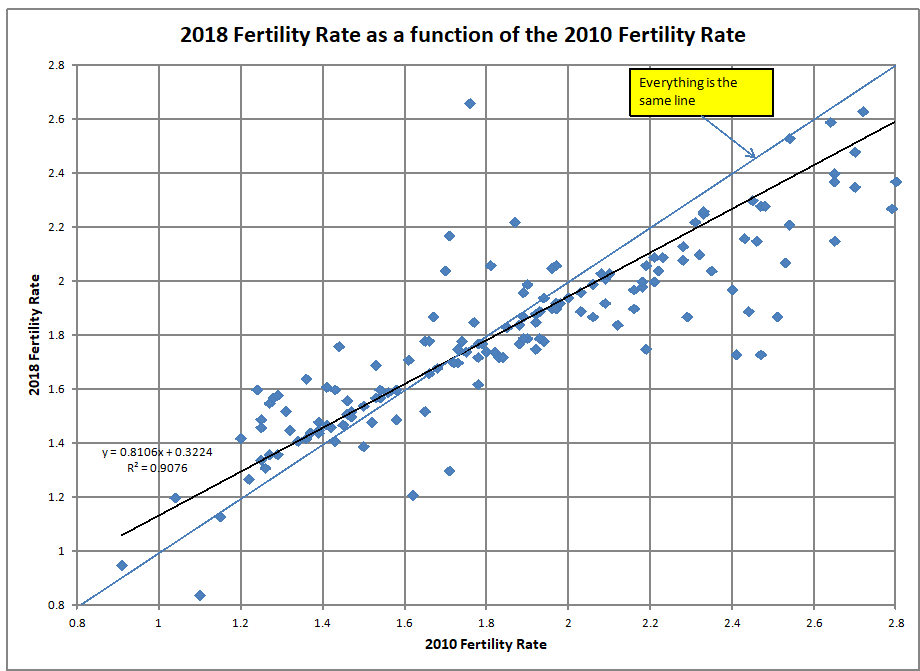
Take a look at the light blue line in both graphs. That’s the dividing line between fertility rising and falling. Countries above the line have rising fertility 2010-2018, and countries below the line have falling fertility. You will note that the high fertility nations in 2010 have had falling fertility on average, and low fertility nations have had rising fertility on average. The balance point is at 1.7. Now the nations below 1.7 in 2010 are a smaller portion of the total population than the nations above 1.7 in 2010 — overall fertility has fallen, and is likely to continue to do so. But as I said in the last piece:
I?m chuckling a little bit as I write this, because this [fertility rising in low fertility countries] is an interesting result, and one that I never thought I would be writing when I started this project. ?Interesting, huh? ?My guess is that there is a limit to how much you can get people to reduce family sizes before they begin to question the idea. ?Older parents may say, ?What was that all about?? but children are usually fun and cute when they are little if they are reasonably disciplined.
On Human Fertility, Part 5
I think most of these changes stem from cultural factors and not government incentives. When women conclude that the rewards of society (money, power, approval of peers) go to those with fewer children, that?s a tough cultural idea to overcome. ? Subsidies will not move the needle.
Some husbands and wives may conclude that family life is worth investing in, and they will have one more kid. At present trends, more will conclude that the investment in the future that a child represents is not worth their time, and they will have one fewer kid. Most will just imitate what they see in others, and not think about the issue (or, their issue 😉 ).
To the group having fewer kids, I would tell them that hey are being short-sighted. They should consider their old age. Now, they might be better off financially than those with more kids in their old age, but they will lack key supporters who love them when they are too old to fend for themselves. People without such supporters tend to live less happily, get taken advantage of more often, and lose sanity younger.
And, the future may not be as stable as it is today. Older people rely on stability far more than those who are young. Having young allies is more important when things go bad.
And so I close the article with a note that I am likely to be blessed by my first grandchild next month. I smile and look forward to a future that will hopefully be rich with younger people who love me.



